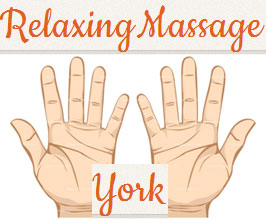Myofascial release massage works on tissues just under the skin called fascia. When fascia become damaged and or inflexible it can cause you pain. Techniques used in this therapy help to heal and stretch what were tight tissues. This can help with pain originating from here and can benefit you other ways too. There are a lot of scientific studies that say it does work and work well for people. Come and get some of these benefits for yourself today!
Fascia is a sheet of connective tissue just under your skin, around muscles, organs and also separating body compartments. Normally this healthy tissue is strong and pliable but, when it is unhealthy it can cause discomfort and pain. Myofascial release massage techniques can help relieve these issues. There are more and more scientific studies telling us it can work for people, so it can work for you too. Book your treatment today!
What is Fascia?
Facial tissue is a tyoe of connective tissue that exists all over the body. There are up to 4 different layers of It. It surrounds muscles, separates organs from other tissues, separates different compartments of the body and has other functions as well. The fascia we are interested in for myofascial release and help with pain lies just under the skin which means it is easy to access during massage.
How Fascia can Cause Me Pain and Discomfort?
Normally in a healthy body your fascia will be strong. This is because it needs to hold some things together and even add a layer of protection to parts of the body. When it’s healthy, it is quite flexible and pliable. This means when we move, it too should move and stretch freely. Also, when we move our muscles move. This should happen without much friction between the layers of fascia around the muscles.
However, when it loses some of its’ flexibility because you are not moving or exercising as much you should for example, it can start to cause discomfort. When fascia starts to not stretch easily, you might feel pain as it is being stretched. Not unlike pushing open an old unoiled door, it may creak. Also, when less healthy fascia rubs together, between muscles for example, there can be more friction which can cause pain. Just like all tissues you must use it, stretch it, for it to remain healthy. Body fluids must flow through it regularly to regenerate it, retain its flexibility and keep it well lubricated.
What is Myofascial Release Massage?
Myofascial release massage is the use of different, generally gentle techniques to move, stretch and manipulate facial connective tissues. It can involve the use of your therapists fingers or palms gliding over the skin and pulling, pushing and streching it. The layers of fascia are thus moved away from deeper muscles and bones. Werenski j (2011) tells us the goal of myofascial release massage is to relax and loosen up tight areas of fascia around the body.
The facia is lengthened or shortened (stretched or pushed togther) which releases adhesion that may be there. Doing this, over skin warmed up by effleurage or friction strokes beforehand, will also aid repairing the tissues. New oxygenated body fluids arrive and old used fluids move away more easily. If this tissue is stretched a few times, for a few minutes, the tissue will become more flexible. Think of it like taking an uninflated balloon and stretching before inflating it. It will inflate more easily just as stretched fascia moves more easily.
How Can it Help Me With My Pain?
To help with this sort of facial pain and discomfort, you need to release your fascia. When we move facial tissue moves as well. It is supposed to glide effortlessly, with no adhesion and no friction. It is after all made up of mainly body fluids and not solid matter. If fascia is sticking together rather than sliding freely this can cause you pain. In the longer term this can cause more issues as we tend to avoid pain. So, if we avoid movement that causes us this type of pain, the fascia gets tighter and sticks together more and more. You can see that it will only get worse.
Simply tell you therapist where it hurts and they can use myofascial release techniques around that area. The massage of these tissues in particular can help lessen pain and you can benefit a number of other ways too. Come and give our relaxing massage a try today as it has many of these technique in it.
Evidence That Myofascial Massage Can Help
There are a good number of scientific studies that show us facial release can do us good. I have picked a couple out for you here.
Sanchez A et al (2010) studied 64 people diagnosed with a painful condition called fibromyalgia. They were split into 2 groups. 1 group was assigned as a control group and get no massage treatment. The other tested group revived 1.5 hours of myofascial release massage treatment once a week for a period of about 4 months. Results show straight after treatment and 1 month post-treatment the tested group sleep, quality of life, anxiety and pain were all improved.
Werenski J (2011) did a comprehensive review of available literature about Myofascial pain and how effective myofascial release is for this. There are 54 separate relevant references including other documented studies available in his review. He concludes available studies and other important literature support the use of these techniques which can be very effective in helping people suffering myofascial pain.
References:
Sanchez A et al (2010) Benefits of Massage-Myofascial Release Therapy on Pain, Anxiety, Quality of Sleep, Depression, and Quality of Life in Patients with Fibromyalgia [online] available from https://www.hindawi.com/journals/ecam/2011/561753/ last accessed 14/05/2022
Werenski J (2011) The Effectiveness of Myofascial Release Techniques in the Treatment of Myofascial Pain: A Literature Review [online] available from https://www.logan.edu/mm/files/LRC/Senior-Research/2011-Aug-34.pdf last accessed 12/05/2022
Video Examples of Techniques:
https://www.youtube.com/watch?v=b6UYOH5lvyc
https://www.youtube.com/watch?v=V8qTZCmqGvI
